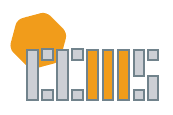Abstract / Synopsis
Modelling could be characterised as one of the core activities in mathematics education. However, when learning and teaching mathematics, mathematical modelling is mostly used to apply and deepen mathematical knowledge and competencies. Our educational study aims to explore how mathematical modelling, using real objects and high-quality mathematical technologies, could be utilised to acquire mathematical knowledge and competencies, and how learners could creatively use their existing knowledge. To discover the potential of mathematical modelling using real objects and high-quality mathematical technologies to acquire mathematical knowledge and competencies, and to stimulate learners' creativity, first, we combined cognitive and creative spirals and mathematical modelling cycles. Then, in a case study, we tested this combination of cognitive and creative spirals and mathematical modelling cycles in a secondary school and teacher education. Applying the combination of cognitive and creative spirals and mathematical modelling cycles, we discovered that it could be collaboration among learners and technological knowledge and skills of learners that determine whether knowledge can be acquired in mathematical modelling.
DOI
10.5642/jhummath.202101.13
Recommended Citation
Robert Weinhandl & Zsolt Lavicza, "Real-World Modelling to Increase Mathematical Creativity," Journal of Humanistic Mathematics, Volume 11 Issue 1 (January 2021), pages 265-299. DOI: 10.5642/jhummath.202101.13. Available at: https://scholarship.claremont.edu/jhm/vol11/iss1/13
